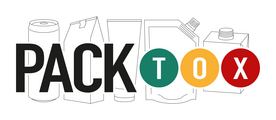Evaluation des dispositifs médicaux en plastique
Le derttech a participé à deux projets de l'ANSM sur l'évaluation du risque chimique des dispositifs médicaux.
Plusieurs articles sont issus de ces travaux :
L. Bernard et al. Migration of plasticizers from PVC medical devices: development of an infusion model
T Eljezi et al.In vitro cytotoxic effects of DEHP-alternative plasticizers and their primary metabolites on L929 cell line
L Dahbi et al. In vitro and in silico approach to study the hormonal activitiesof the alternative plasticizer tri‑(2‑ethylhexyl) trimellitate TEHTM and its metabolites
Available from: https://www.researchgate.net/publication/358191059_In_vitro_and_in_silico_approach_to_study_the_hormonal_activities_of_the_alternative_plasticizer_tri-2-ethylhexyl_trimellitate_TEHTM_and_its_metabolites
Approche appliquée à l'évaluation génotoxique d'une chaîne de recyclage de papiers-cartons
Genotoxic effects of food contact recycled paperboard extracts on two human hepatic cell lines
Approche appliquée aux cosmétiques
Packtox vient de publier un article, en collaboration avec Pierre Fabre : Chemical analysis and potential endocrine activities of aluminium coatings intended to be in contact with cosmetic water
Revue : Bioassays and food contact materials
Avec plus de 20 ans de recul, l'équipe de packtox a publié une revue sur l'utilisation de tests in vitro pour aider à l'évaluation du risque des matériaux à contact alimentaire : Use of bioassays to assess hazard of food contact material extracts: State of the art
Guide ILSI sur l'évaluation des substances non intentionnelles ou NIAS (Non Intentionally Added Substances)
Mme Chagnon a participé à un groupe de travail d'ILSI (International Life Science Institute) dont les reflexions ont abouti à un guide de référence pour l'évaluation des substances non intentionnelles présentes dans les emballages destinés au contact avec les denrées alimentaires.
Retrouver la totalité du guide ici
3 articles réalisés en collaboration avec le laboratoire d'hydrologie de l'ANSES à Nancy
- Article publié dans Water Research en 2012 : Chemical compounds and toxicological assessments of drinking water stored in polyethylene terephthalate (PET) bottles: a source of controversy reviewed.
- Article publié dans Food Chemistry en 2013 : Effect of temperature on the release of intentionally and non-intentionally added substances from polyethylene terephthalate (PET) bottles into water: Chemical analysis and potential toxicity.
- Article publié dans Food Chemistry en 2014 : Effect of sunlight exposure on the release of intentionally and/or non-intentionally added substances from polyethylene terephthalate (PET) bottles into water: Chemical analysis and in vitro toxicity.
Article publié dans la revue Food Chemistry en 2016 : The consequences of physical post-treatments (microwave and electron-beam) on food/packaging interactions: A physicochemical and toxicological approach
2 articles publiés dans le cadre du FUI "saveur-vapeur" en collaboration avec le laboratoire des Multimatériaux et Interfaces de l'Université de Lyon :
- Article publié dans la revue Food and Chemical Toxicology en 2014: In vitro genotoxicity assessment of MTES, GPTES and TEOS, three precursors intended for use in food contact coatings
- Article publié dans la revue Food and Chemical Toxicology en 2016 : In vitro toxicity assessment of extracts derived from solegel coatings on polycarbonate intended to be used in food contact applications
5 articles publiés d'après les travaux réalisés dans le projet européen "Biosafepaper"
- SEVERIN, I, Dahbi, L, Lhuguenot, JC, Anderson, MA, Hoornstra, D, Salkinoja-Salonen, M, Turco, L, Zucco, F, Stammati, A, Savolainen, M, Weber, A, Honkalampi-Hämäläinen, U, Von Wright, A. Safety assessment of food contact paper and board using a battery of short-term toxicity tests: European Union Biosafepaper project. Food Add. Contam. 2005, 22 : 1032-1041.
- ANDERSONN M, Hakulinen P, Honkalampi-Hamalainen U, Hoornstra D, Lhuguenot JC, Mäki-Paakanen J., Savolainen M, Severin I, Stammati, AL, Turco L, Weber A, Von Wright A, Zucco F, Salkinoja-Salonen, M. Toxicological profile of cereulide, the bacillus cereus emetic toxin, obtained in different cell systems by functional and genetic methods.Toxicon, 2007, 49:351-367
- BRADLEY EL, Honkalampi-Hämäläinen U, Weber A, Andersson MA, Bertaud F, Castle L, Dahlman O, Hakulinen P, Hoornstra D, Lhuguenot JC, Mäki-Paakkanen J, Salkinoja-Salonen M, Speck DR, Séverin I, Stammati AL, Turco L, von Wright A, ZuccO F. The biosafepaper project for in vitro toxicity assessments: Detailed chemical characterisation and testing of extracts from paper and board samples. Food Chem. Tox. 2008, 46:2498-509.
- BRADLEY EL, Stammati AL, Salkinoja-Salonen M, AnderssoN M, Bertaud F, Hoornstra D, Zucco F, Weber A, Turco L, Traussnig H, Hakulinen P, Speck DR, Von Wright A, Honkalampi-Hamalainen U, Maki-Paakkanen J, Severin I, Lhuguenot JC, Dahlman O. Test procedures for obtaining representative extracts suitable for reliable in vitro toxicity assessment of paper and board intended for food contact.Food Add. Contam. 2010, 27:262-71.
- HONKALAMPI-Hämäläinen U, Bradley EL, Castle L, Severin I, Dahbi L, Dahlman O, Lhuguenot JC, Andersson MA, Hoornstra D, Salkinoja-Salonen M, Turco L, Stammati AL, Zucco F, Weber A, von Wright A. Safety evaluation of food paper and board using chemical tests and in vitro bioassays: role of known and unknown substances. Food Add. Contam. 2010, 27:406-15.
Articles scientifiques en lien avec l'emballage ou les biotests (2001-2009)
- VALENTIN I, PHILIPPE M, LHUGUENOT JC, CHAGNON MC. Uridine uptake inhibition as a cytotoxicity test for a human hepatoma cell line (HepG2 cells): comparisons with the neutral red assay. Toxicology 2001, 158:127-139.
- VALENTIN-SEVERIN I, LAIGNELET L, LHUGUENOT JC, CHAGNON MC. Uridine uptake inhibition assay: an automated micromethod for the screening of cytotoxicity. Toxicology 2002, 171:207-213.
- VALENTIN-SEVERIN I, LE- HEGARAT L, LEBON AM, LHUGUENOT JC, CHAGNON MC Use of HepG2 cell line for direct or indirect mutagens screening: comparative investigation between comet and micronucleus assays. Mutat. Res. 2003, 536:79-90.
- SEVERIN I, JONDEAU A, DAHBI L, CHAGNON MC. 2,4-Diaminotoluene induced DNA damage, DNA repair and micronucleus formation in the human hepatoma cell line HepG2. Toxicology 2005, 213: 138-146.
- JONDEAU A, Dahbi L, Bani-Estivals MH, Chagnon MC. Evaluation of the sensitivity of three sublethal cytotoxicity assays in human HepG2 cell line using water contaminants. Toxicol. 2006, 226:218-228.
- STROHEKER T, REGNIER JF, LASSURGUERE J, CHAGNON MC. Effect of in utero exposure to di-(2-ethylhexyl) phthalate: distribution in the rat fetus and testosterone production by rat fetal testis in culture, Food Chem. Tox. 2006, 44:2064-2069.
- CABATON N, CHAGNON MC, LHUGUENOT JC, CRAVEDI JP, ZALKO D. Disposition and metabolic profile of Bisphenol F in pregnant and non pregnant rats. J. Agric. Food Chem. 2006, 54: 10307-10314.
- CABATON N, ZALKO D, RATHAHAO E, CANLET C, DELOUS G, CHAGNON MC, CRAVEDI JP, PERDU, E. Biotransformation of bisphenol F by human and rat liver subcellular fractions. Toxicol. in Vitro, 2008, 22:1697-704;
- CABATON N, DUMONT C, SEVERIN I, PERDU E, ZALKO D, CHERKAOUI-MALKI M, CHAGNON M.C. Genotoxic and endocrine disruption effects of bis(hydroxyphenyl)methane (Biphenol F) and its derivatives in the HepG2 cell line. Toxicology, 2009, 255 :15-24.



